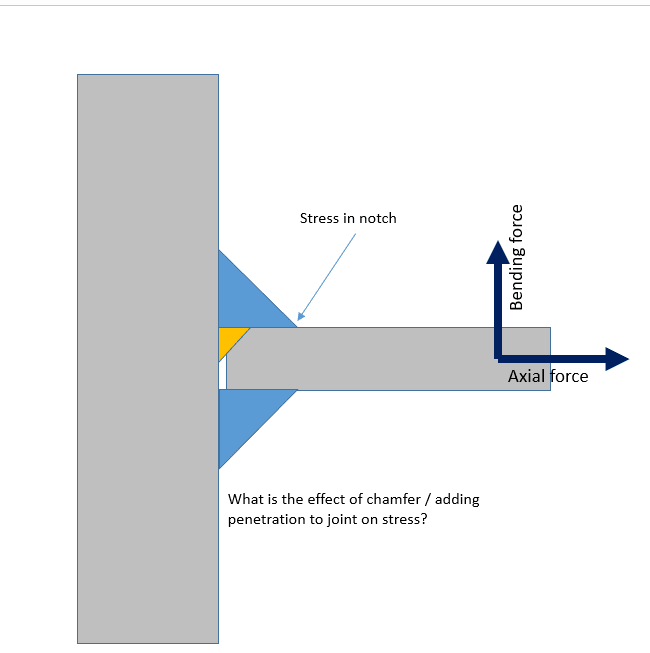I am using finite elements to model a frame which has several fillet welded joints. I am
using effective notch stress method to get accurate stresses. I studied the effect of
adding a chamfer to the connected plates (butt weld and fillet weld on top). In some
joints the weld toe stress reduces max. 20% but in some joints there is not a noticeable effect.
Can someone explain why this is? I guess at least the loading type (axial/bending) affects this.
For nominal stress method, IIW recommends FAT71 instead of FAT63 if there is full penetration for cruciform joint.
In my understanding their nominal stress fatigue classes don't differentiate between loading type.

using effective notch stress method to get accurate stresses. I studied the effect of
adding a chamfer to the connected plates (butt weld and fillet weld on top). In some
joints the weld toe stress reduces max. 20% but in some joints there is not a noticeable effect.
Can someone explain why this is? I guess at least the loading type (axial/bending) affects this.
For nominal stress method, IIW recommends FAT71 instead of FAT63 if there is full penetration for cruciform joint.
In my understanding their nominal stress fatigue classes don't differentiate between loading type.

